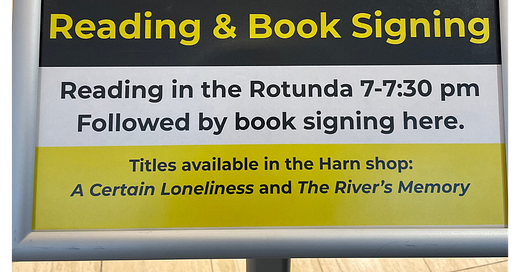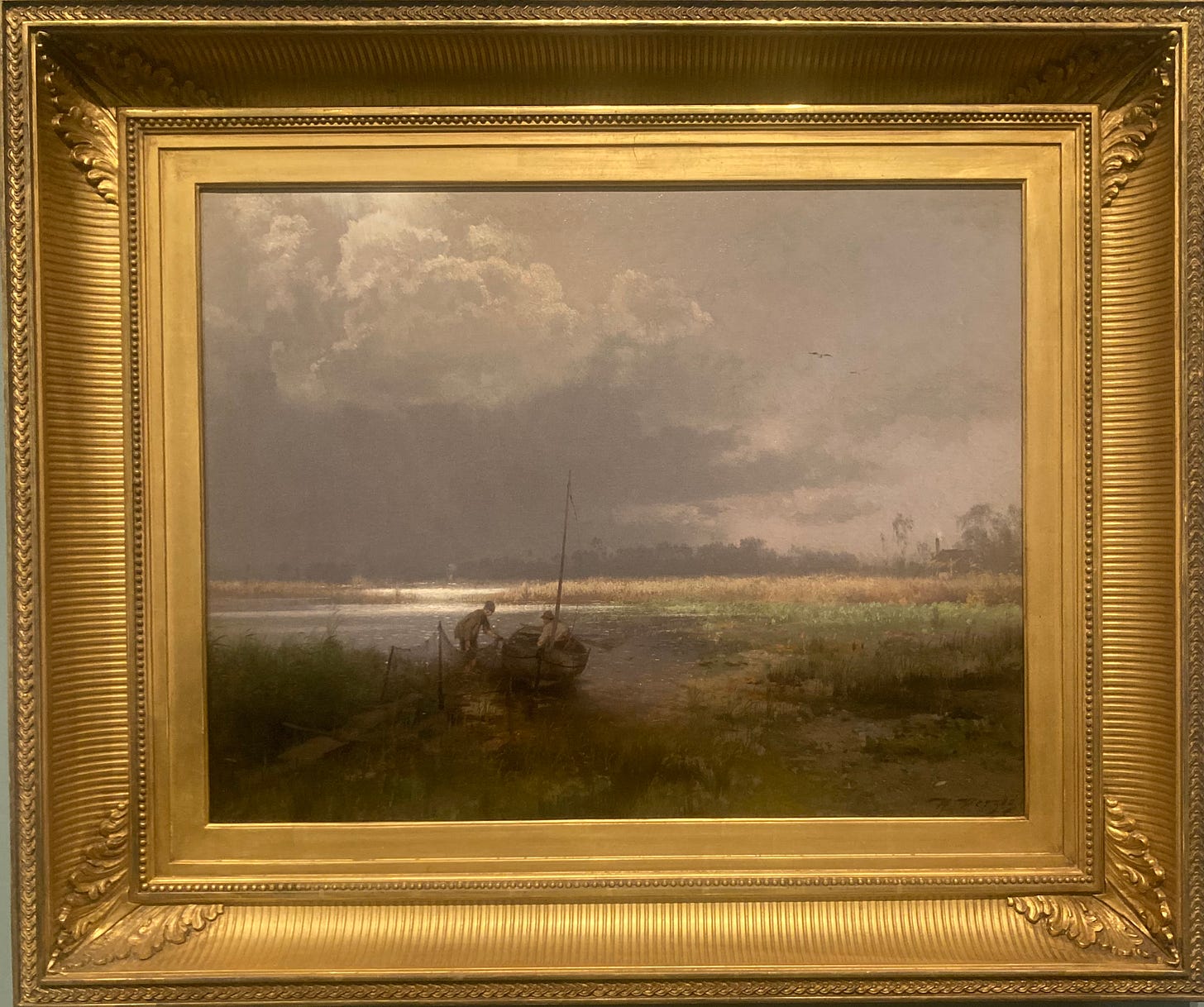Last night I read my work at the Harn Museum. I chose an excerpt from my essay “Rolling in the Mud.” Here are my remarks, more or less, after the reading. —
Here we are at the Harn enjoying their June tradition of celebrating LGBTQ Pride month. I want to thank Eric and Errol for inviting me, to the bookstore here for carrying my books, and to Lauren at The Lynx bookstore for suggesting me as a good fit for this program. These days universities can find themselves winding through a labyrinth of restrictions and forbidden words. But we are here tonight because a small group of people came together and figured out a creative way of keeping this tradition going.
Pride Night was changed to “The Summer Extravaganza” and the drag show was described as performance and fashion centric. Me, the old lesbian portion of the evening, was simply a “local author.” And all this creative re-naming and coded language worked. We get to be here in this beautiful museum celebrating along with information booths staffed by the Pride Center, the UF Student Pride, and Trans groups. And the vegan beef sliders have little gay pride flag toothpicks holding them together.
So my purpose, as the invited local author and old lesbian, is to add to this LGPTQ+ celebration. And what did I just do? I read a piece that doesn't have a speck of queer content in it. How is that okay? How is that respectful of the efforts made to pull together this event? How does this in any way affirm our lives or celebrate our existence? And this choice of reading in a repressive time when activism is becoming more and more necessary—what the heck was I thinking? I mean I could have chosen to share some very cool lesbian history by recounting life as a feminist bookseller in the 1980s. Or perhaps I could have gone with my essay "Old Lesbian Love,” the one with all those juicy parts, juicy parts with no coded language.
“Orange,” oil on board, Frank Henry Shapleigh
But in preparation for this event, Eric and Errol showed me around the museum and asked if any of the art work connected with any of my writing. This painting here on the screen is the one. That boat, those guys, and a shoreline that could be exactly where I launched the kayak in this essay. Not very likely, but it is possible. And the ground, the way it’s painted, I can sense the way earth is becoming water there. I know how it would feel under my body. And I remembered that I had written that feeling into this essay.
Still, I guess I'm supposed to justify this choice not to include any queer content. Except that I don't have to. I am a lesbian. Anything I write is infused with lesbian content. And, of course, in my life, this applies to disability informing all my work, as does my experience of whiteness, and how I was raised adamantly middle class by working class parents and in the cultural discipline of a military household. All of this is always in my writing, in my essays, in my novels, in each short story, in a grocery list (especially in a grocery list).
And those of us who believe this way say this with fierceness. I am a lesbian so everything I write is lesbian. Whether it's true or not is something debated among scholars and artists and writers and historians throughout the years. But I don't care about that debate except to note how it so often has homophobic overtones. But have fun with it. But you're wrong if you think I am required to debate.
But there is something beyond this adamant statement. I don't need there to be anything beyond to justify the truth. And sometimes, I think, we don't name a beyond or explore another, underneath layer, because it might seem as if we're allowing for the fact of essential queerness no matter what not to be true. But in this essay there is a beyond to be explored.
Let’s start when I was living in Atlanta managing Charis Books, a feminist bookstore and helped plan the Savannah River Peace Encampment of 1983. That's where I met a contingent of the renown, vibrant Gainesville lesbian community. And unlike me, they spent extended time in jail due to that action and there they planned the Women's Peace March from Gainesville down to Key West. I joined up as the march reached the town of Jupiter. Afterwards, I would visit my new friends in Gainesville. Many of these lesbians had a deep knowledge of Florida’s natural world and they took me to their most beloved places, which included hikes out onto La Chua trail. In those times the trail extended deeper into the wildness of the Prairie. It was such an adventure.
Then when I had to quit paid work because of increasing disability (another story), I moved to Gainesville. I mean I moved here because of community and friendship but also because of the natural world. It wasn't as if I fell in love with it at first sight. It was more a feeling of remembering, of recognition, of a deep sense of the familiar. Before I ever moved here, I was home. And I, in turn, became a student and explorer and chronicler of my own beloved places.
So it was because a group of lesbians shared their care and concern and knowledge of the environment that I came to be there on that new, flooded shoreline and to roll in that mud. How’s that for the essay's lesbian content?
So I do, with fierceness, say anything I write is lesbian no matter the content, no matter the context. Even when, if pressed, I would be unable to come up with any specifics. But sometimes there is, not an explanation, no explanation is required, but there is a wonderful story.
Audio Version:






You do you so beautifully. Brava.
It was an eye opening and sensory rich experience to hear you read and be exposed to your own experiences through your words. I believe nature is female at its core: Mother Earth, Gaia, in Spanish we refer to it in feminine: la naturaleza. Marge Piercy wrote sometime ago “The Moon is Always Female” and I extend it to say “Nature is Always Female”
Thank you for your gift.